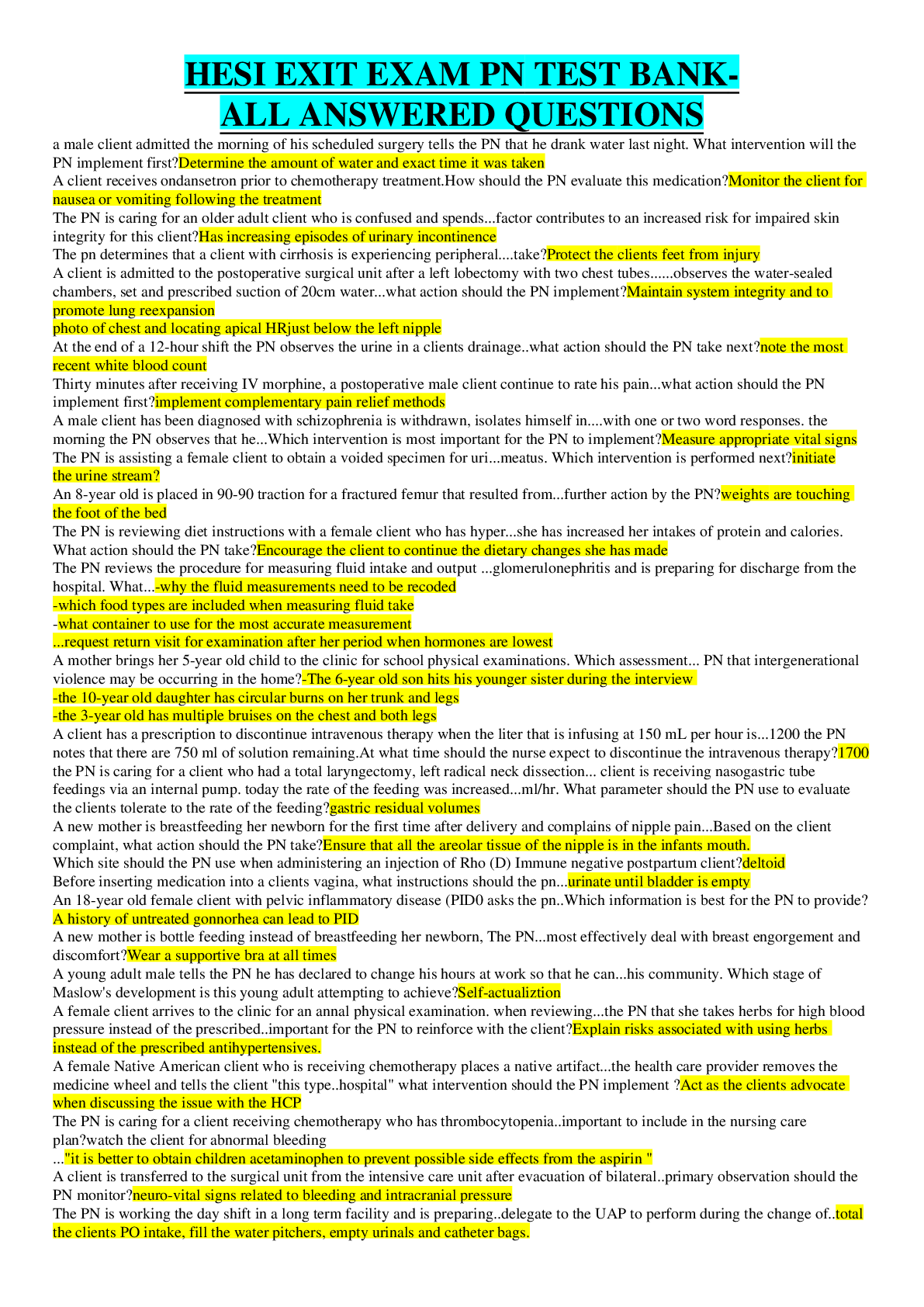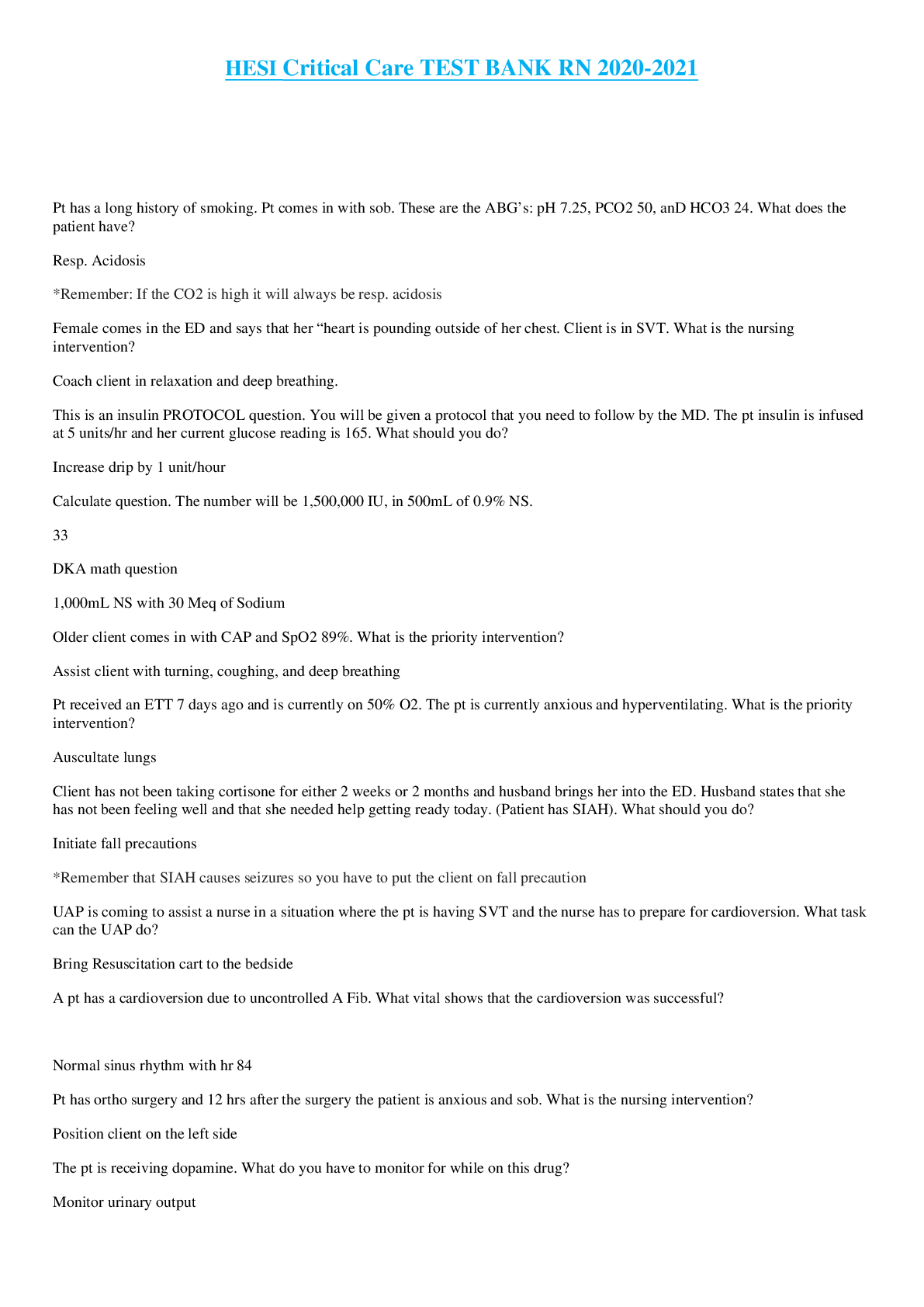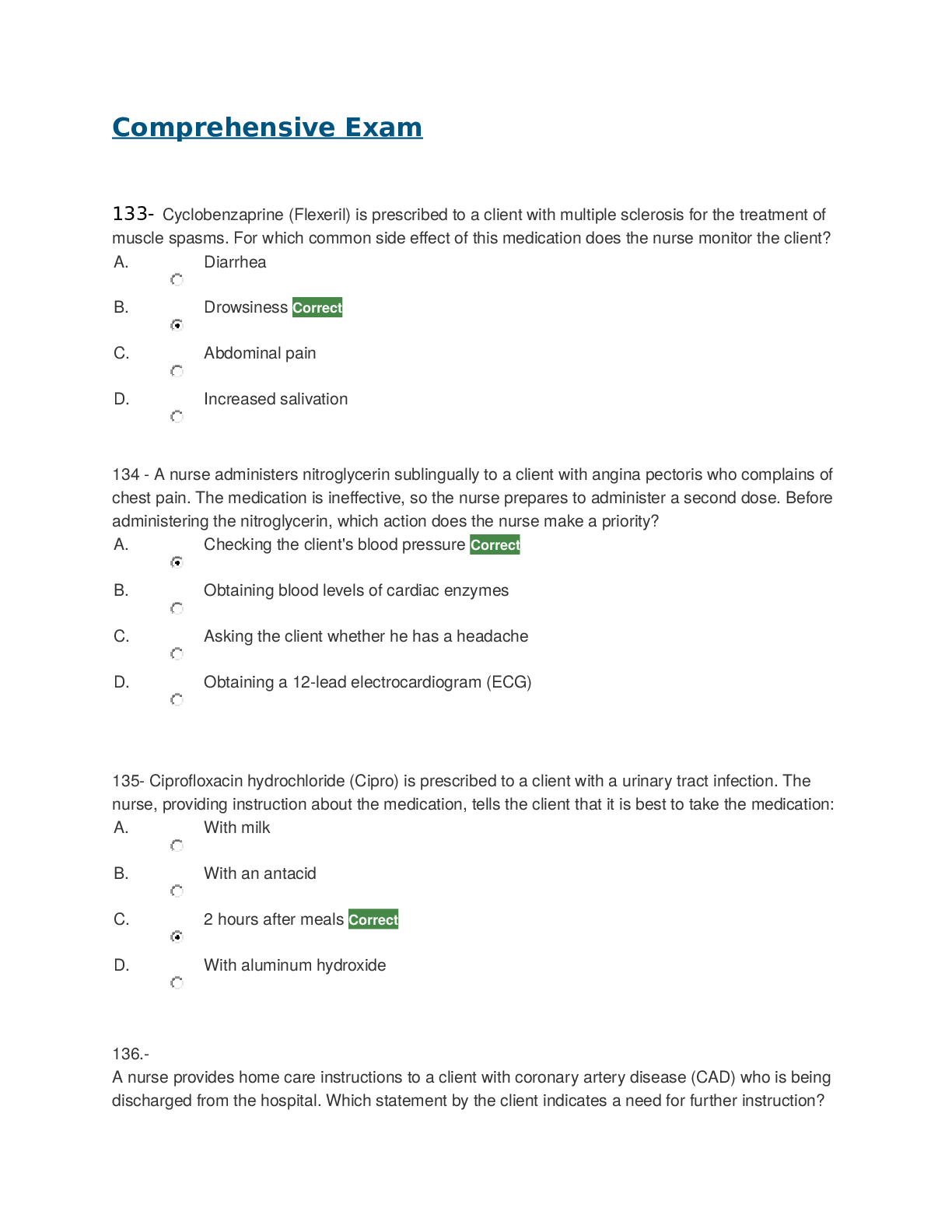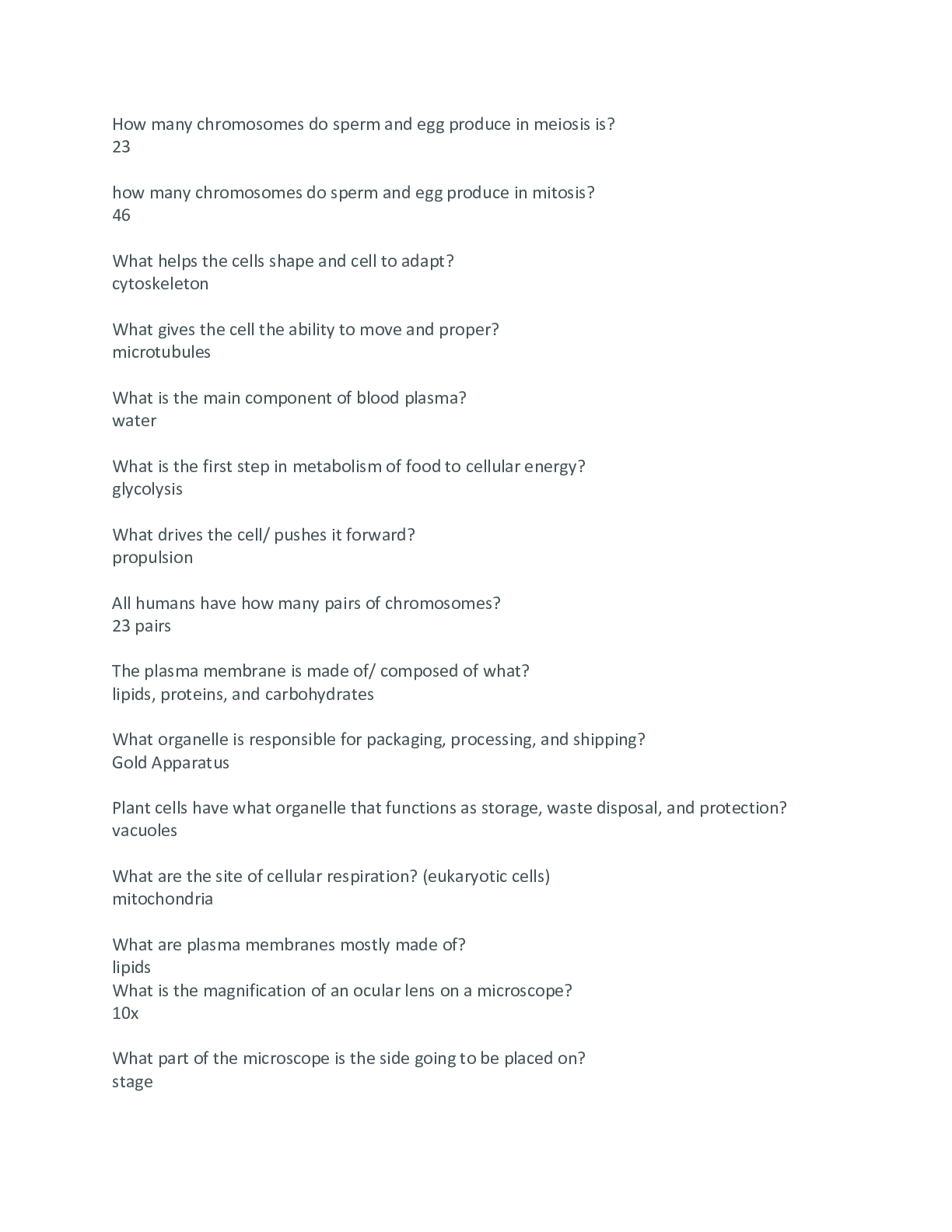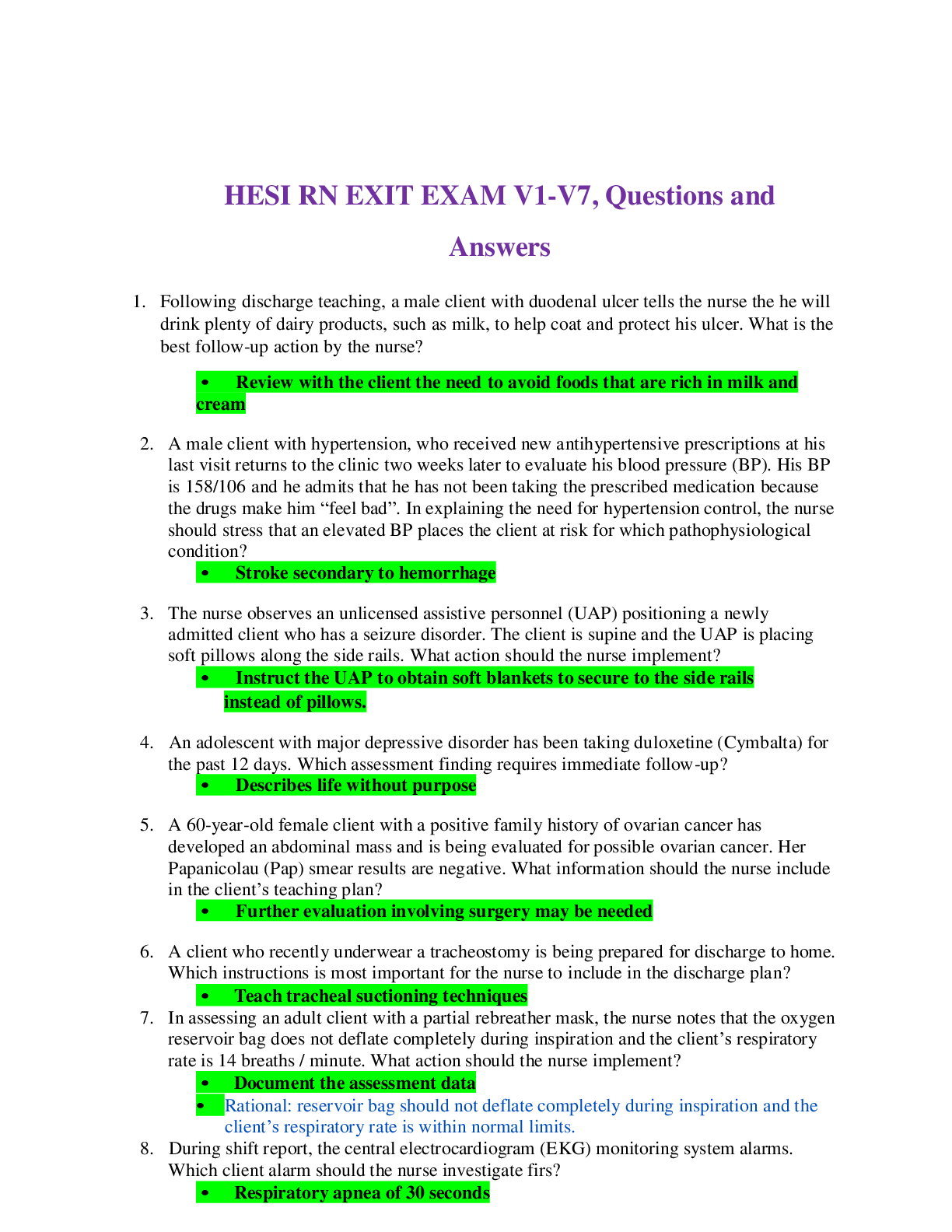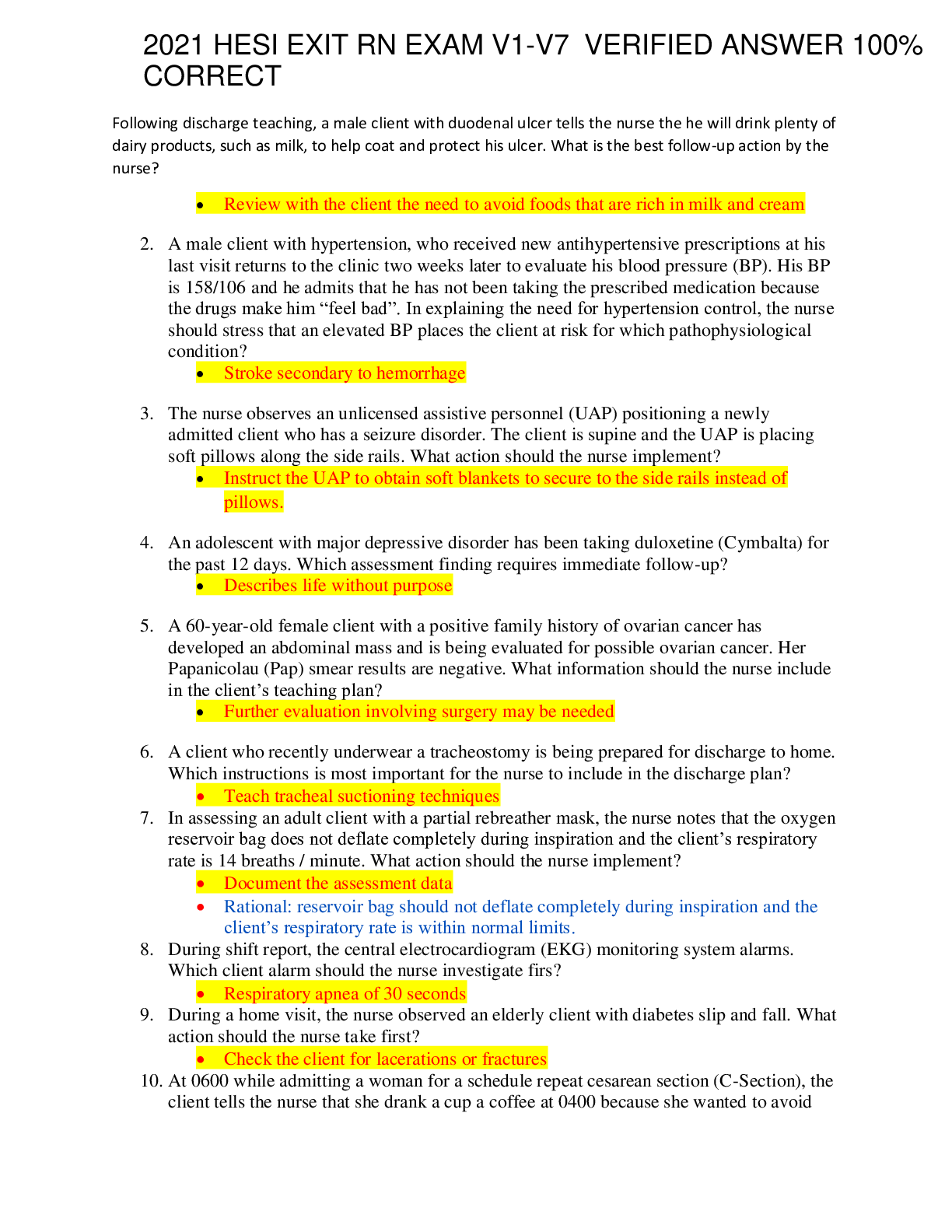HESI EXIT Comprehensive PN Exam A Practice Questions AND ANSWERS
Document Content and Description Below
EXIT HESI Comprehensive PN Exam A Practice Questions AND ANSWERS 1. A nurse who has recently completed orientation is beginning work in the labor and delivery unit for the first time. When making as... signments, which client should the charge nurse assign to this new nurse? A.A primigravida who is 8 cm dilated after 14 hours of labor B.A client scheduled for a repeat cesarean birth at 38 weeks' gestation C.A client being induced for fetal demise at 20 weeks' gestation D.A multiparous client who is dilated 5 cm and 50% effaced The new nurse should be assigned the least complicated client to gain experience and confidence, as well as protect client safety. Of the clients available for assignment, (D) is progressing well and is the least complicated. (A, B and C) have actual or potential complications and should be assigned to a more experienced nurse. 2. A client with human immunodeficiency virus (HIV) infection has white lesions in the oral cavity that resemble milk curds. Nystatin (Mycostatin) preparation is prescribed as a swish and swallow. Which information is most important for the nurse to provide the client? A.Oral hygiene should be performed before the medication. B.Antifungal medications are available in tablet, suppository, and liquid forms. C.Candida albicans is the organism that causes the white lesions in the mouth. D.The dietary intake of dairy and spicy foods should be limited. A HIV infection causes depression of cell-mediated immunity that allows an overgrowth of Candida albicans (oral moniliasis), which appears as white, cheesy plaque or lesions that resemble milk curds. To ensure effective contact of the medication with the oral lesions, oral liquids should be consumed and oral hygiene performed before swishing the liquid Mycostatin (A). (B and C) provide the client with additional information about the pathogenesis and treatment of opportunistic infections, but (A) allows the client to participate in self-care of the oral infection. Dietary restriction of spicy foods reduces discomfort associated with stomatitis, but restriction of dairy products is not indicated (D). 3. A client who is admitted with emphysema is having difficulty breathing. In which position should the nurse place the client? A.High Fowler's position without a pillow behind the head B.Semi-Fowler's position with a single pillow behind the head C.Right side-lying position with the head of the bed elevated 45 degrees D.Sitting upright and forward with both arms supported on an over the bed table Adequate lung expansion is dependent on deep breaths that allow the respiratory muscles to increase the longitudinal and anterior-posterior size of the thoracic cage. Sitting upright and leaning forward with the arms supported on an over the bed table (D) allows the thoracic cage to expand in all four directions and reduces dyspnea. A high Fowler's position does not allow maximum expansion of the posterior lobes of the lungs (A). A semi-Fowler's position restricts expansion of the anterior-posterior diameter of the thoracic cage (B). Positioning a client on the right side with the head of the bed elevated (C) does not facilitate lung expansion. 4. A client with chronic renal insufficiency (CRI) is taking 25 mg of hydrochlorothiazide (HCTZ) PO and 40 mg of furosemide (Lasix) PO daily. Today, at a routine clinic visit, the client's serum potassium level is 4 mEq/L. What is the most likely cause of this client's potassium level? A.The client is noncompliant with his medications. B.The client recently consumed large quantities of pears or nuts. C.The client's renal function has affected his potassium level. D.The client needs to be started on a potassium supplement. C The client has a normalized potassium level despite diuretic use (C). The kidney automatically secretes 90% of potassium consumed, but in chronic renal insufficiency (CRI), less potassium is excreted than normal. Therefore, the two potassium-wasting drugs, a thiazide diuretic and loop diuretic, are not likely to affect potassium levels. The normal potassium level is 3.5 to 5 mEq/L, and with a potassium level of 4 mEq/L, there is no reason to believe that the client is noncompliant with his treatment (A). Pears and nuts do not affect the serum potassium level (B). There is no need for a potassium supplement (D) because the client's potassium level is within the normal range. 5. A registered nurse (RN) delivers telehealth services to clients via electronic communication. Which nursing action creates the greatest risk for professional liability and has the potential for a malpractice lawsuit? A.Participating in telephone consultations with clients B.Identifying oneself by name and title to clients in telehealth communications C.Sending medical records to health care providers via the Internet D.Answering a client-initiated health question via electronic mail C Sending medical records over the Internet, even with the latest security protection, creates the greatest risk for liability because of the high potential of breaching client confidentiality and the amount of information being transferred (C). Client confidentiality is protected by federal wiretapping laws making telephone consultation (A) a private and protected form of communication. By stating one's name and credentials in telehealth communication (B), one is taking responsibility for the encounter. E-mail initiated by the client (D) poses less risk than sending records via the Internet. 6. Which pathophysiologic response supports the contraindication for opioids, such as morphine, in clients with increased intracranial pressure (ICP)? A.Sedation produced by opioids is a result of a prolonged half-life when the ICP is elevated. B.Higher doses of opioids are required when cerebral blood flow is reduced by an elevated ICP. C.Dysphoria from opioids contributes to altered levels of consciousness with an elevated ICP. D.Opioids suppress respirations, which increases Pco2 and contributes to an elevated ICP. D The greatest risk associated with opioids such as morphine (D) is respiratory depression that causes an increase in Pco2, which increases ICP and masks the early signs of intracranial bleeding in head injury. (A, B, and C) do not support the risks associated with opioid use in a client with increased ICP. 7. The charge nurse of a medical surgical unit is alerted to an impending disaster requiring implementation of the hospital's disaster plan. Specific facts about the nature of this disaster are not yet known. Which instruction should the charge nurse give to the other staff members at this time? A.Prepare to evacuate the unit, starting with the bedridden clients. B.UAPs should report to the emergency center to handle transports. C.The licensed staff should begin counting wheelchairs and IV poles on the unit. D.Continue with current assignments until more instructions are received. D When faced with an impending disaster, hospital personnel may be alerted but should continue with current client care assignments until further instructions are received (D). Evacuation is typically a response of last resort that begins with clients who are most able to ambulate (A). (B) is premature and is likely to increase the chaos if incoming casualties are anticipated. (C) is poor utilization of personnel. 8. The nurse assesses a client while the UAP measures the client's vital signs. The client's vital signs change suddenly, and the nurse determines that the client's condition is worsening. The nurse is unsure of the client's resuscitative status and needs to check the client's medical record for any advanced directives. Which action should the nurse implement? A.Ask the UAP to check for the advanced directive while the nurse completes the assessment. B.Assign the UAP to complete the assessment while the nurse checks for the advanced directive. C.Check the medical record for the advanced directive and then complete the client assessment. D.Call for the charge nurse to check the advanced directive while continuing to assess the client. D Because the client's condition is worsening, the nurse should remain with the client and continue the assessment while calling for help from the charge nurse to determine the client's resuscitative status (D). (A and B) are tasks that must be completed by a nurse and cannot be delegated to the UAP. (C) is contraindicated. 9. The nurse is preparing a client for surgery scheduled in 2 hours. A UAP is helping the nurse. Which task is important for the nurse to perform, rather than the UAP? A.Remove the client's nail polish and dentures. B.Assist the client to the restroom to void. C.Obtain the client's height and weight. D.Offer the client emotional support. D By using therapeutic techniques to offer support (D), the nurse can determine any client concerns that need to be addressed. (A, B, and C) are all actions that can be performed by the UAP under the supervision of the nurse. [Show More]
Last updated: 1 year ago
Preview 1 out of 41 pages
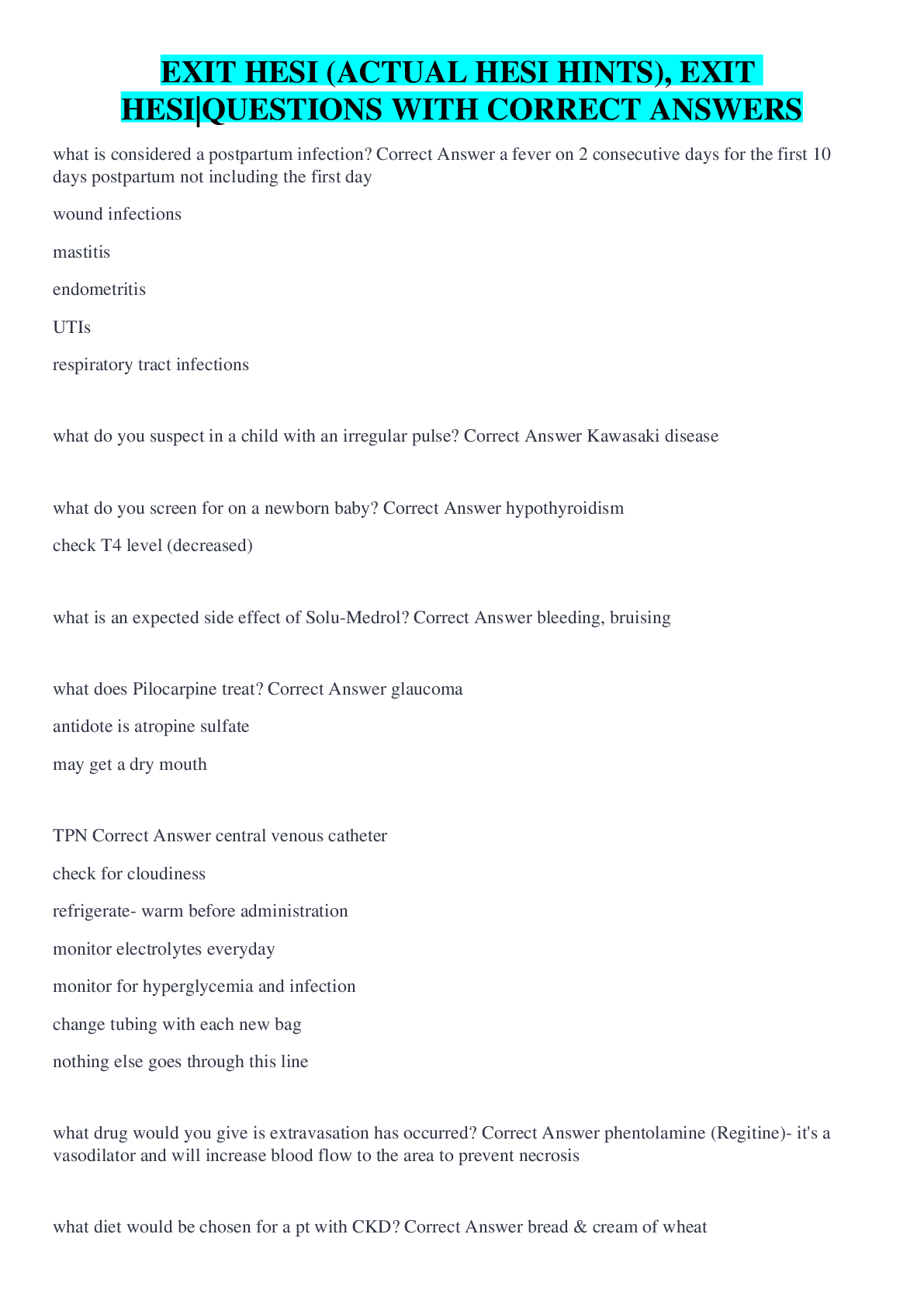
Reviews( 0 )
Document information
Connected school, study & course
About the document
Uploaded On
Sep 02, 2021
Number of pages
41
Written in
Additional information
This document has been written for:
Uploaded
Sep 02, 2021
Downloads
0
Views
74

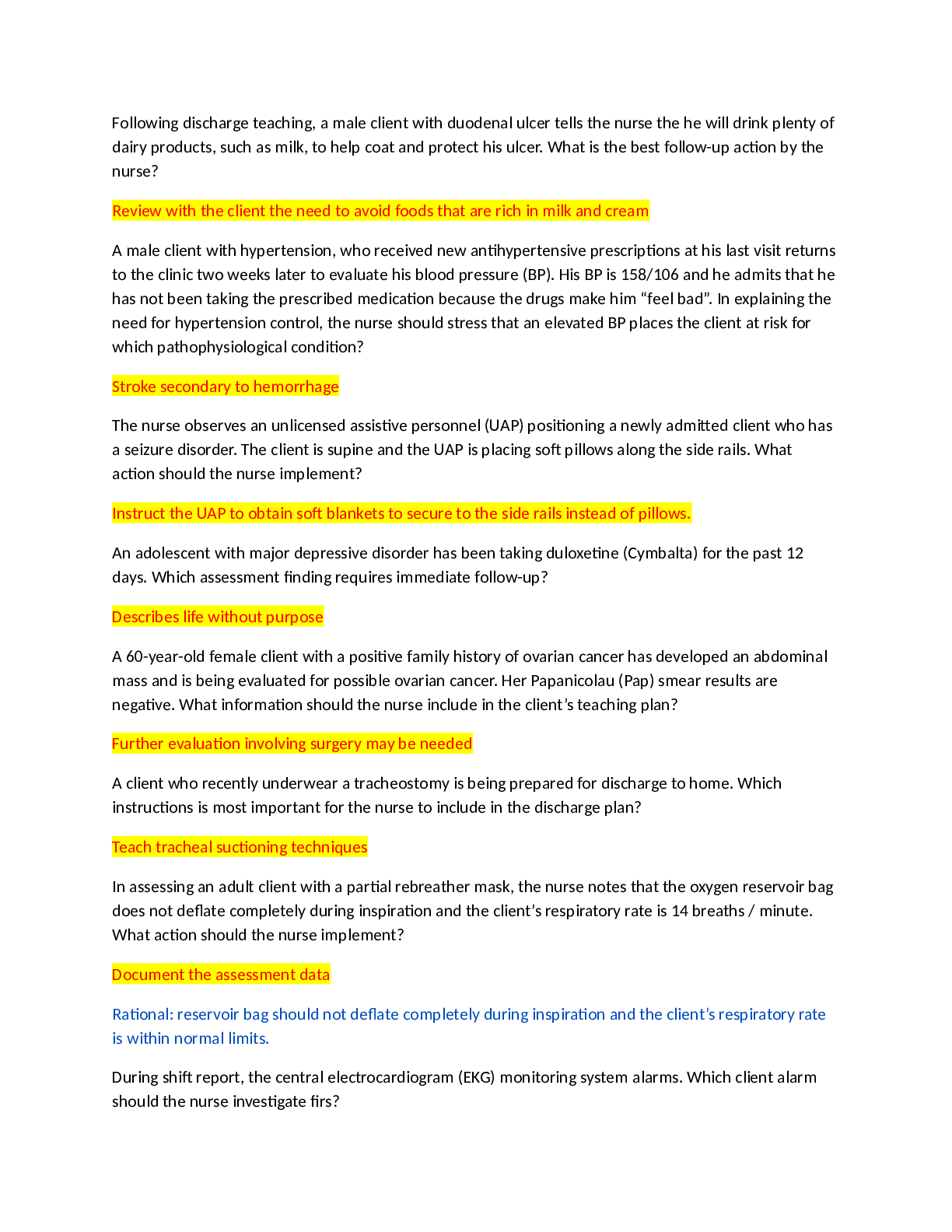

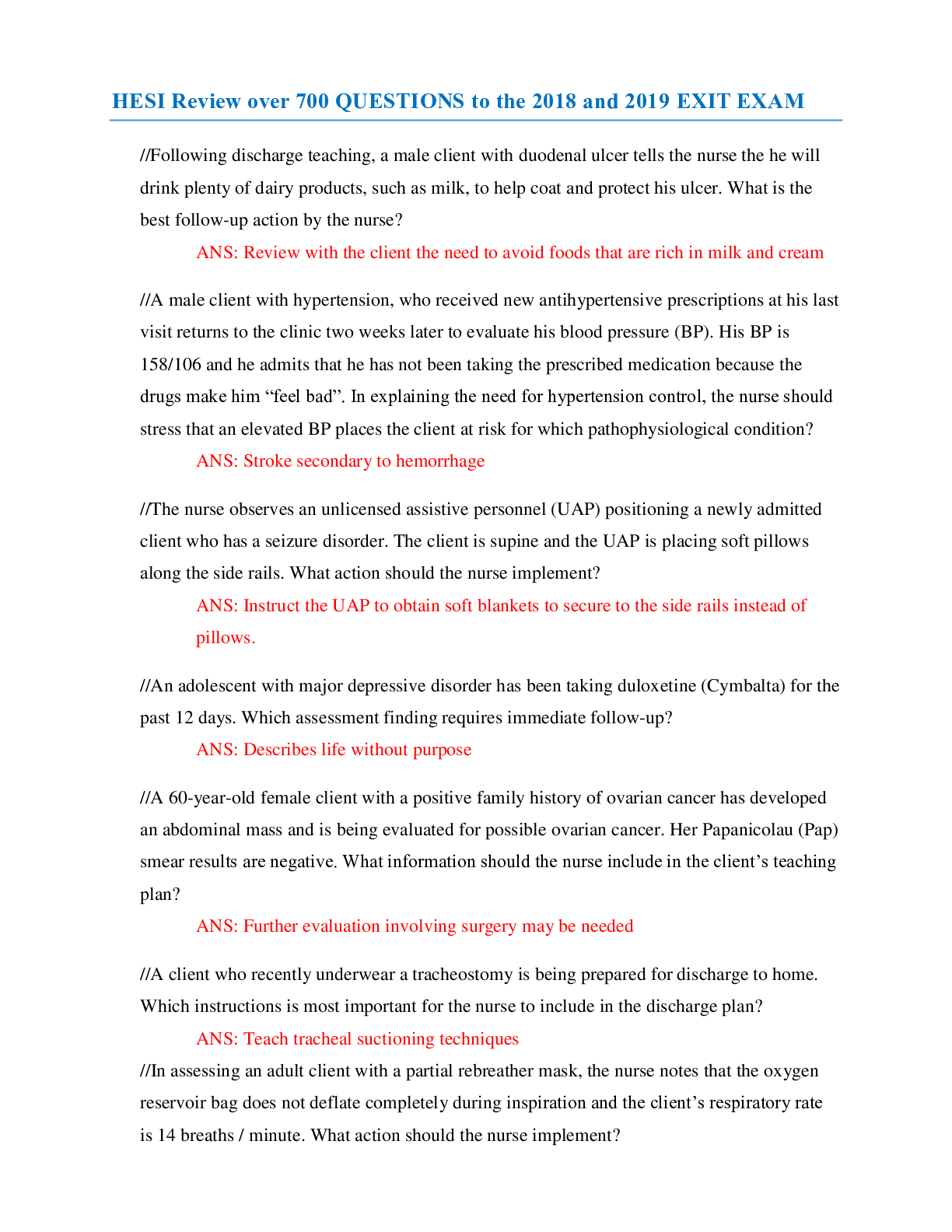
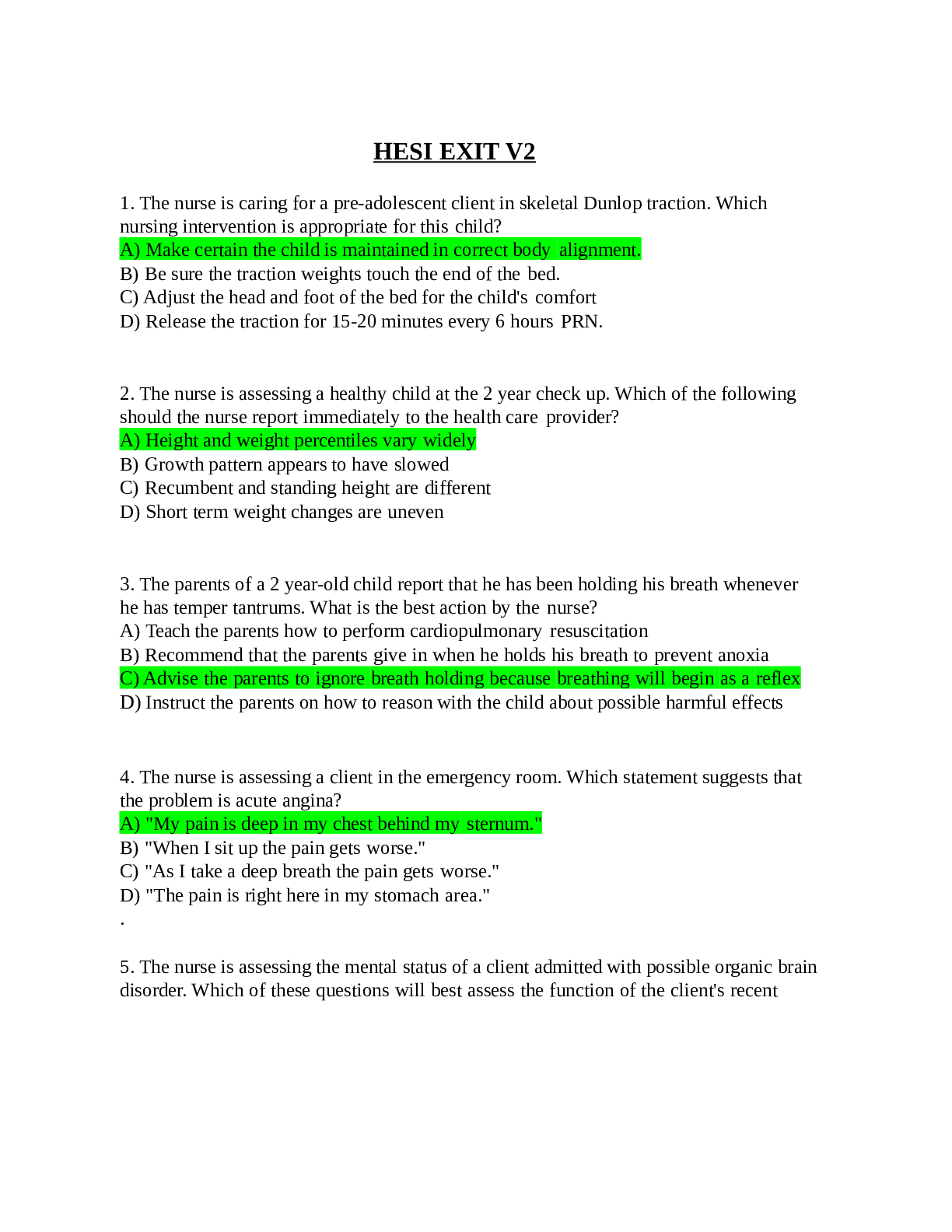
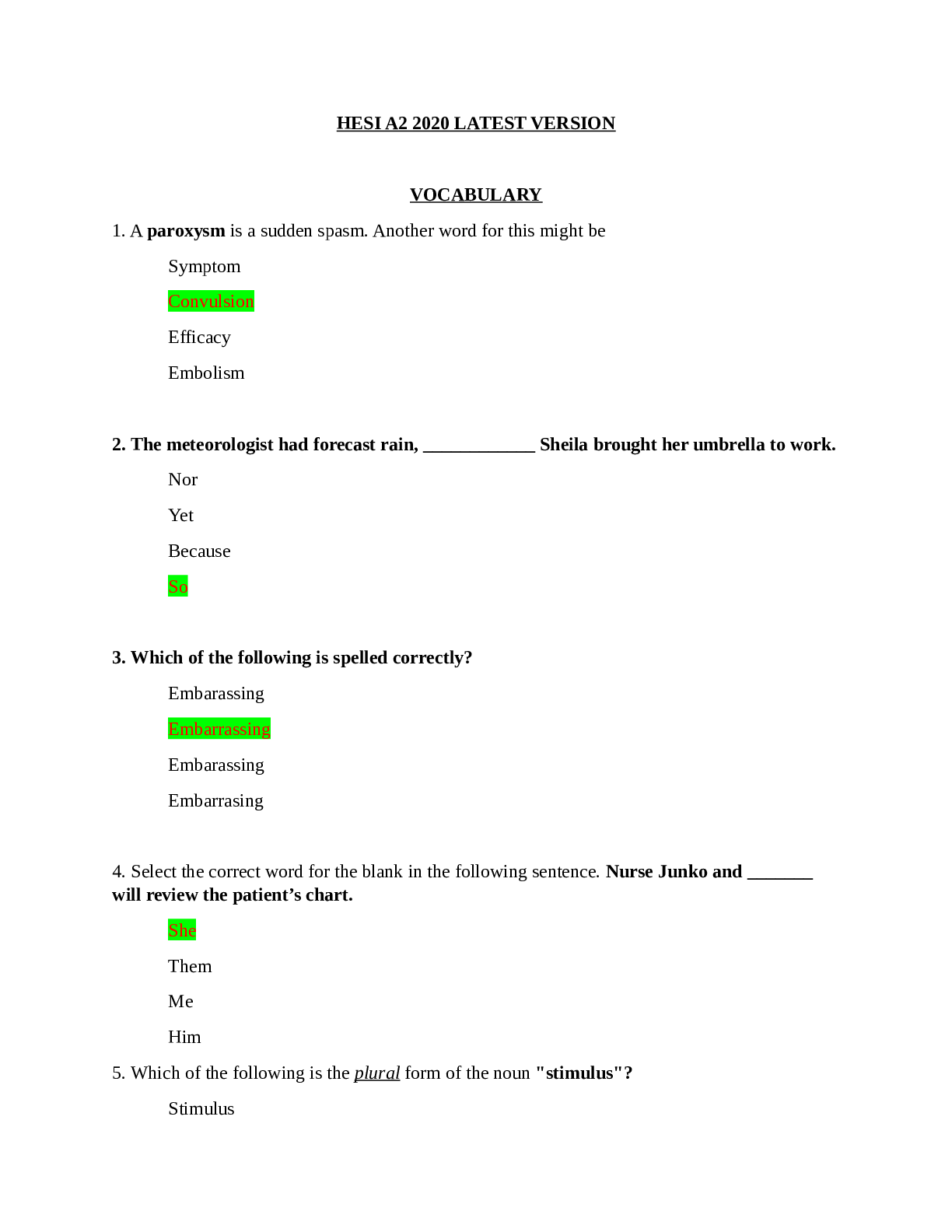
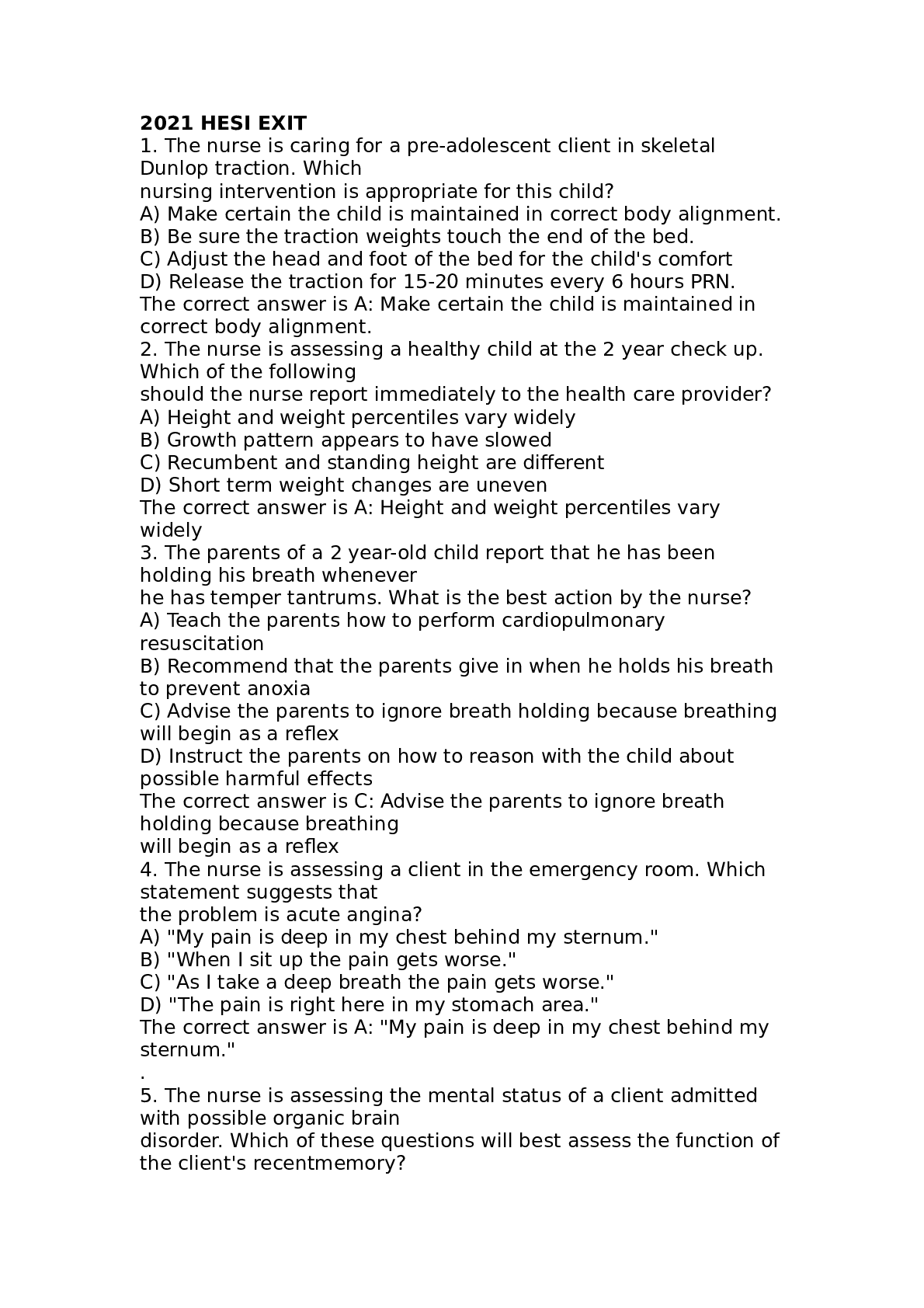
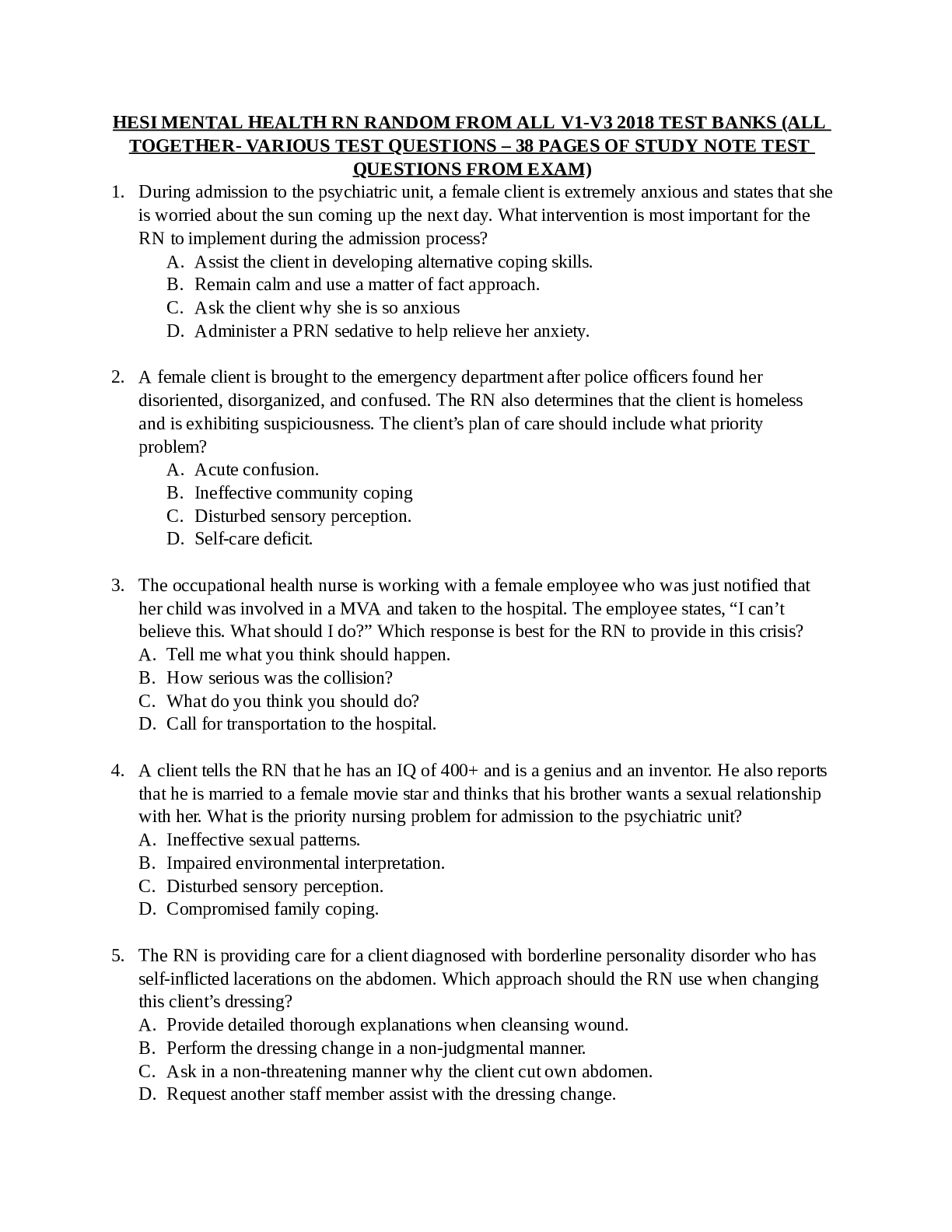

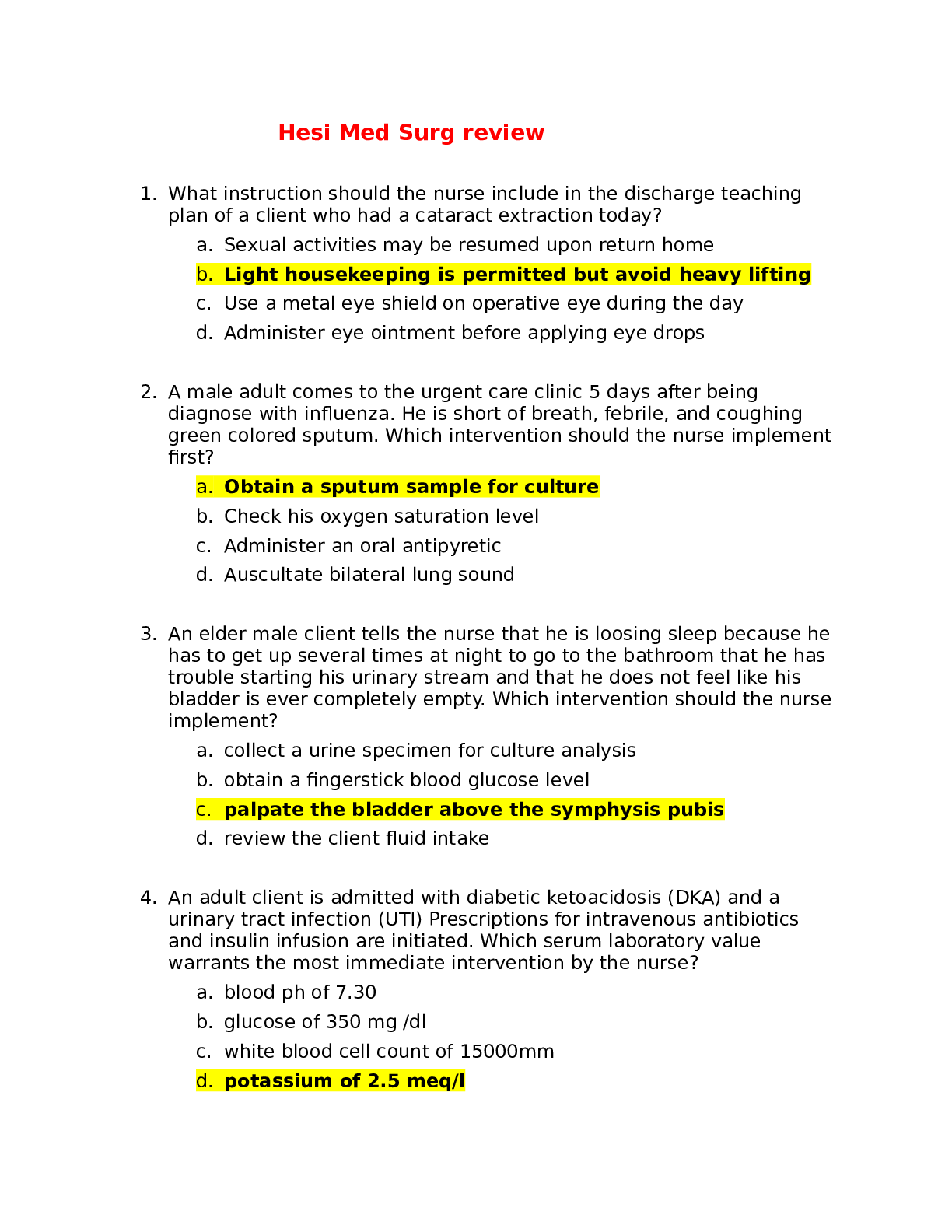
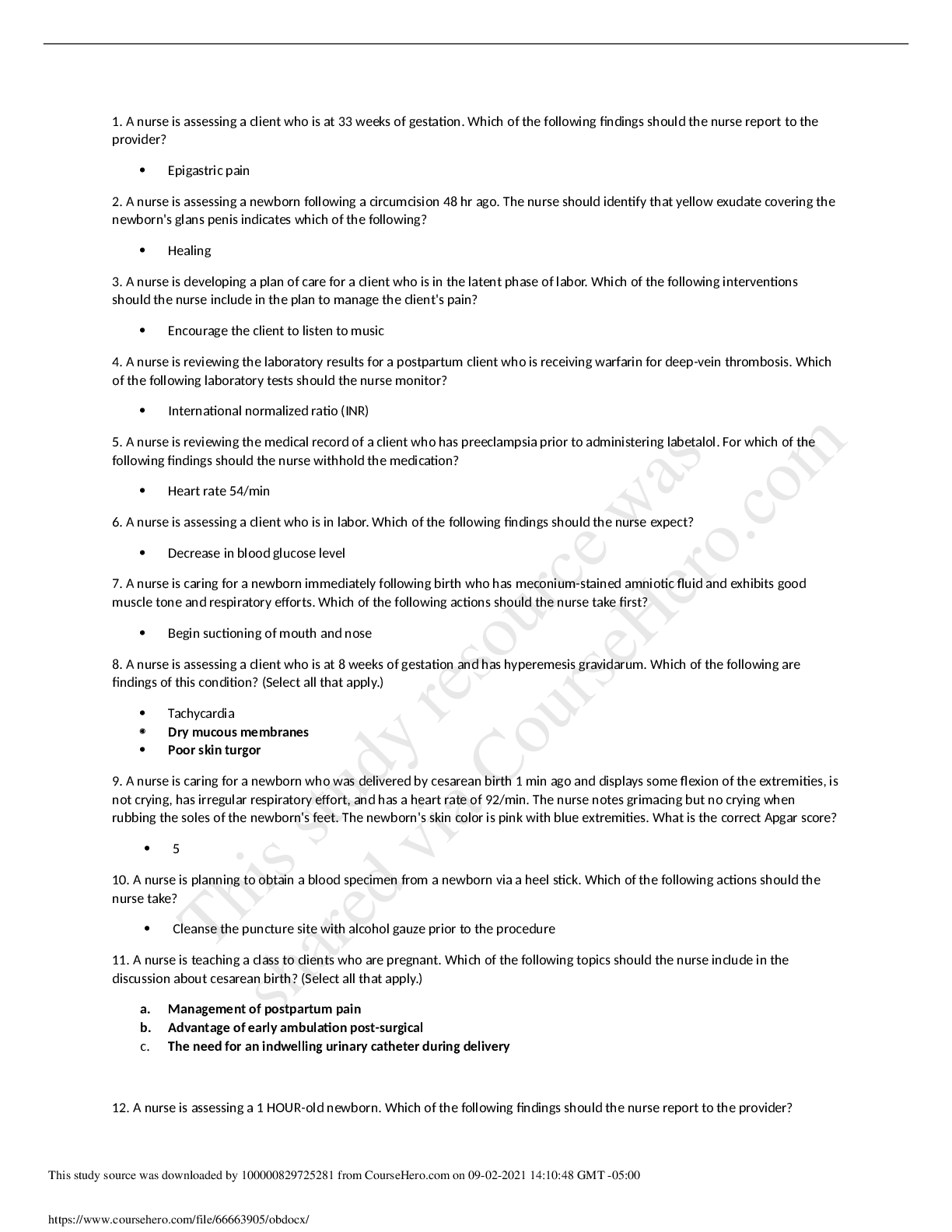
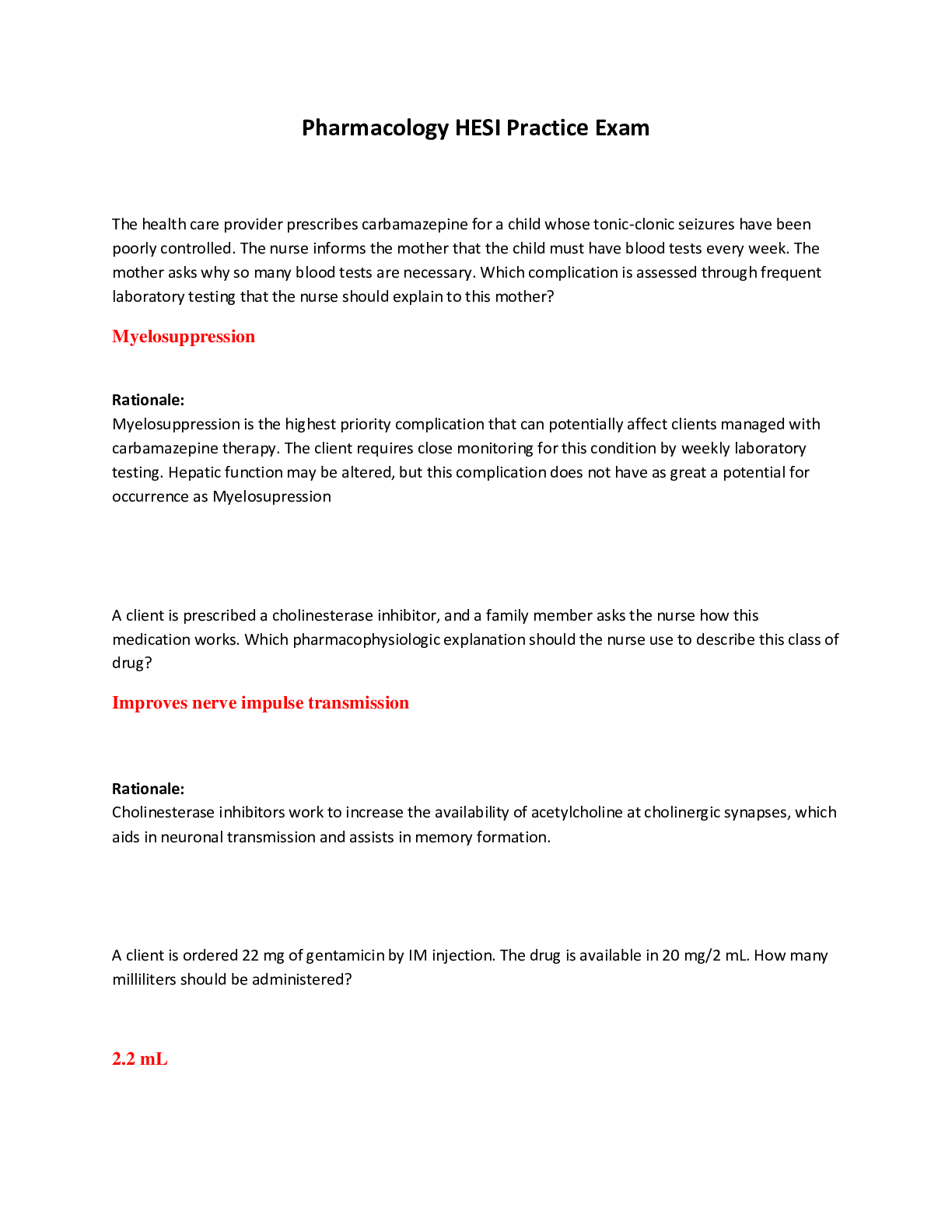
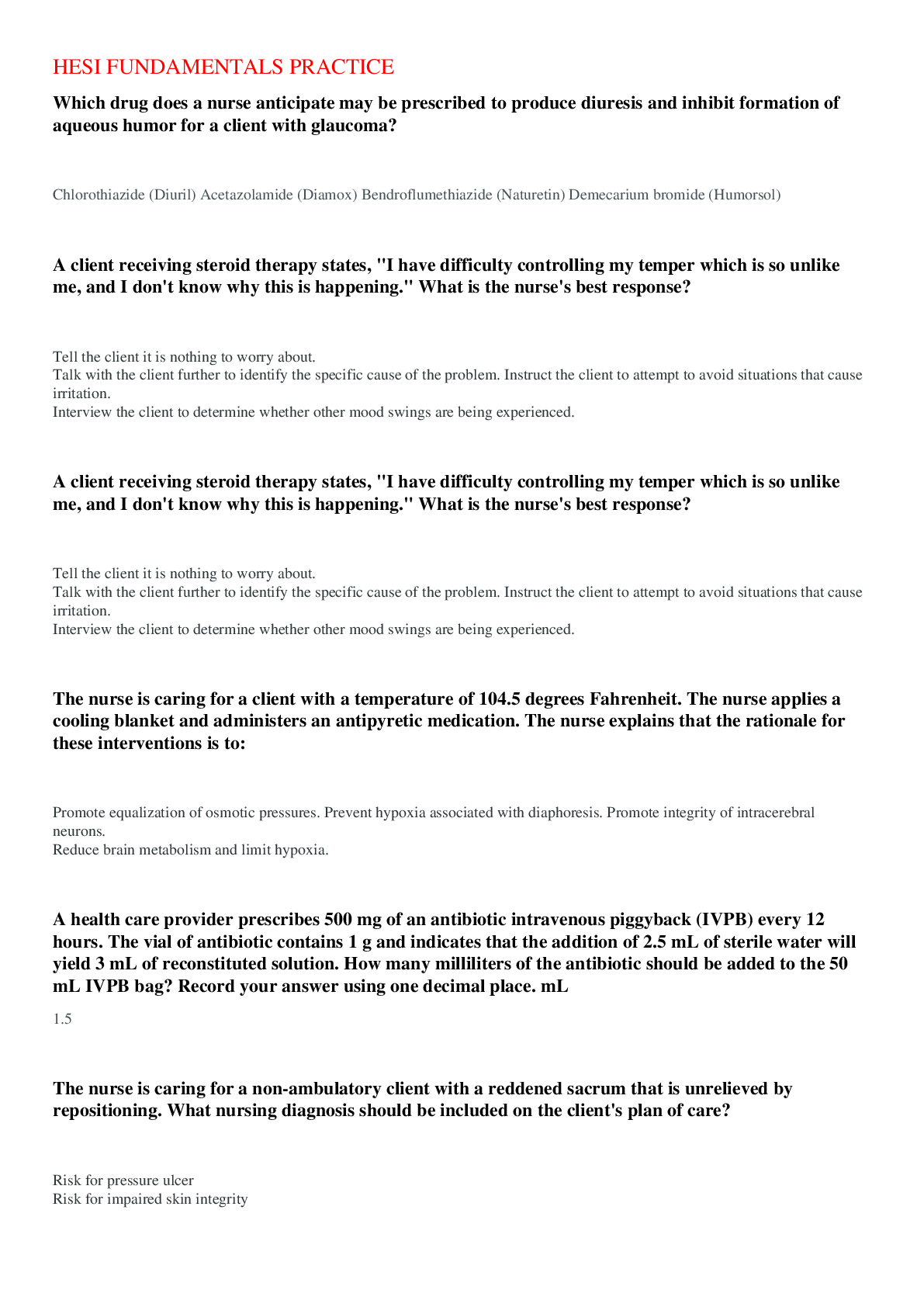
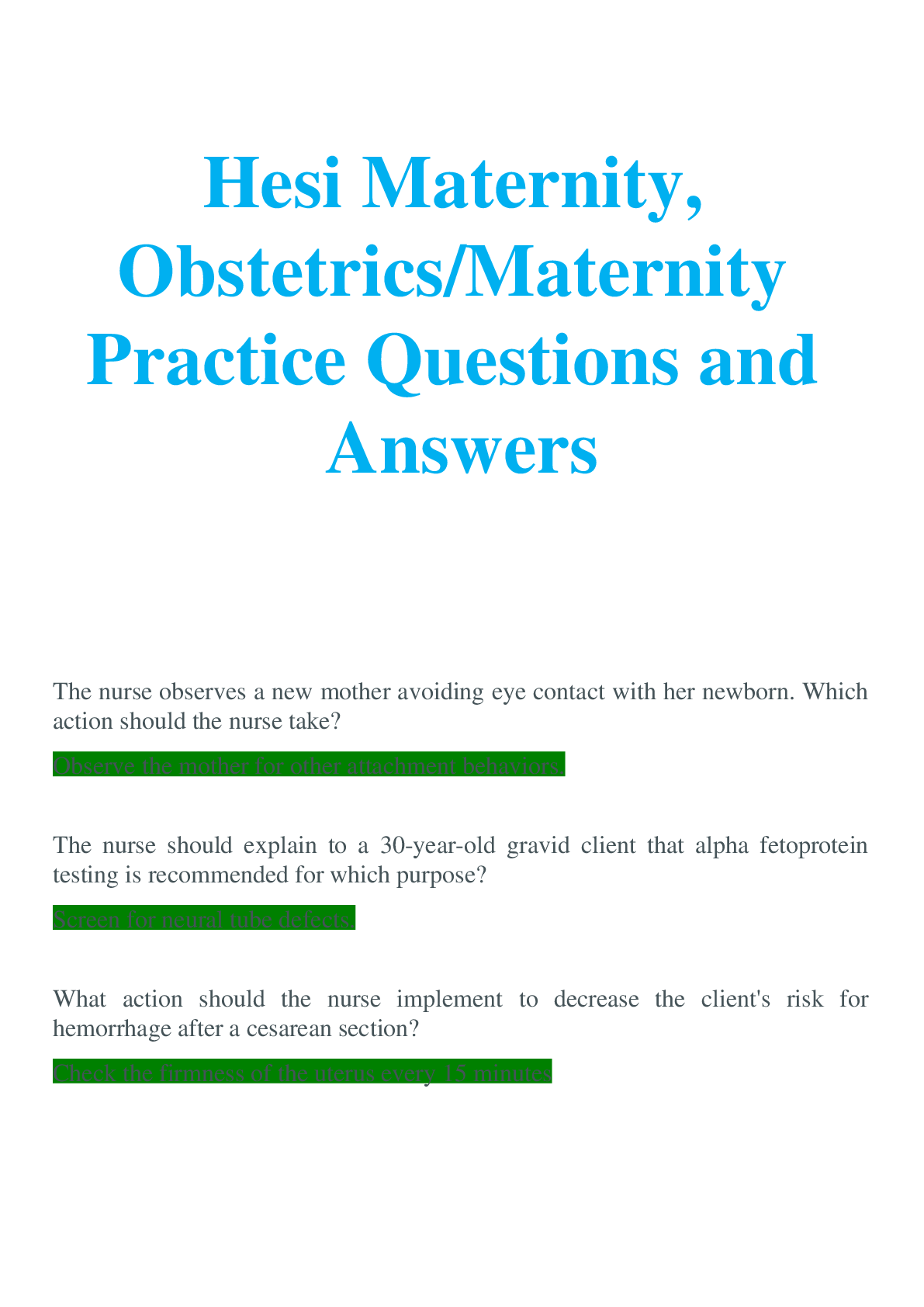

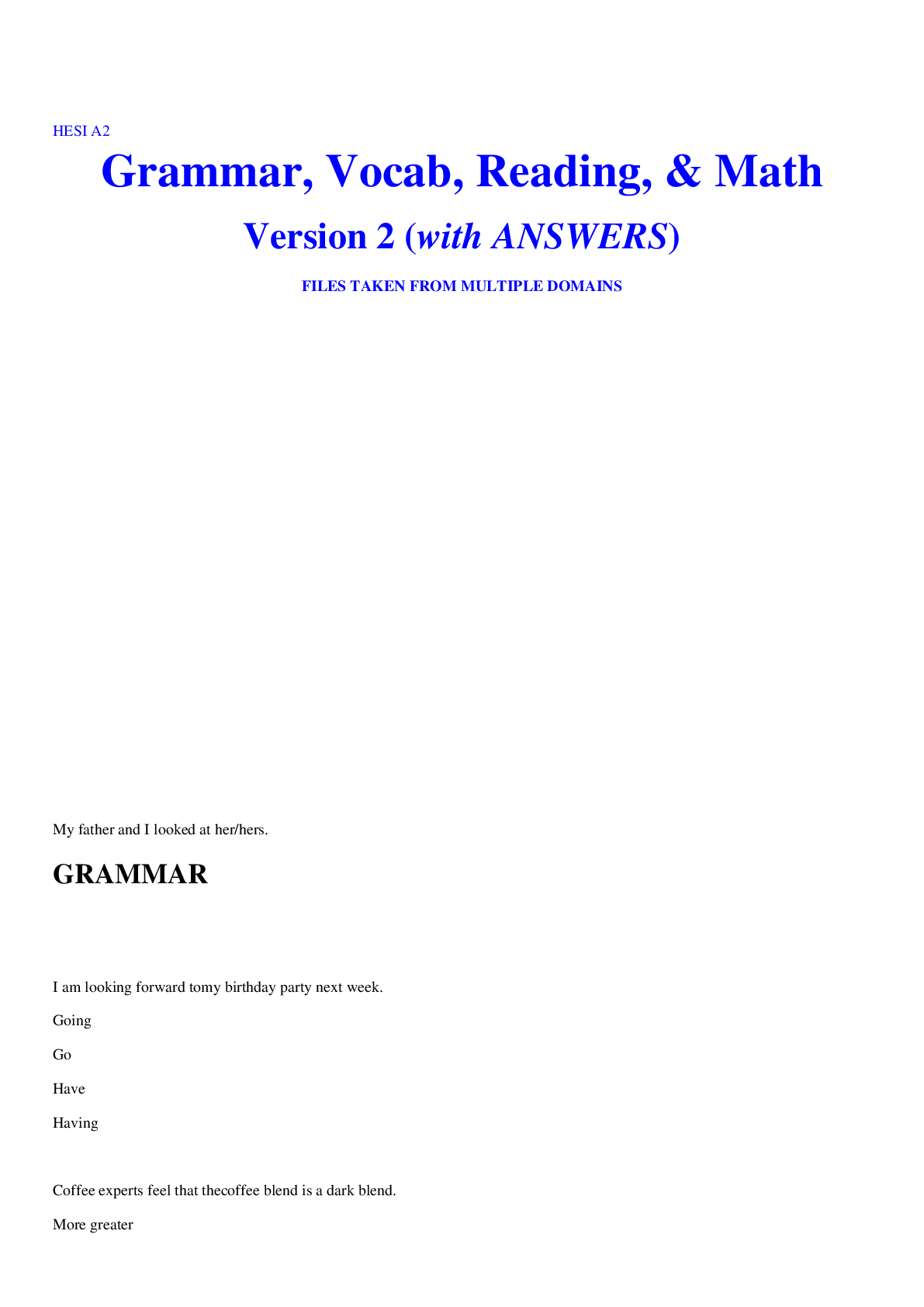
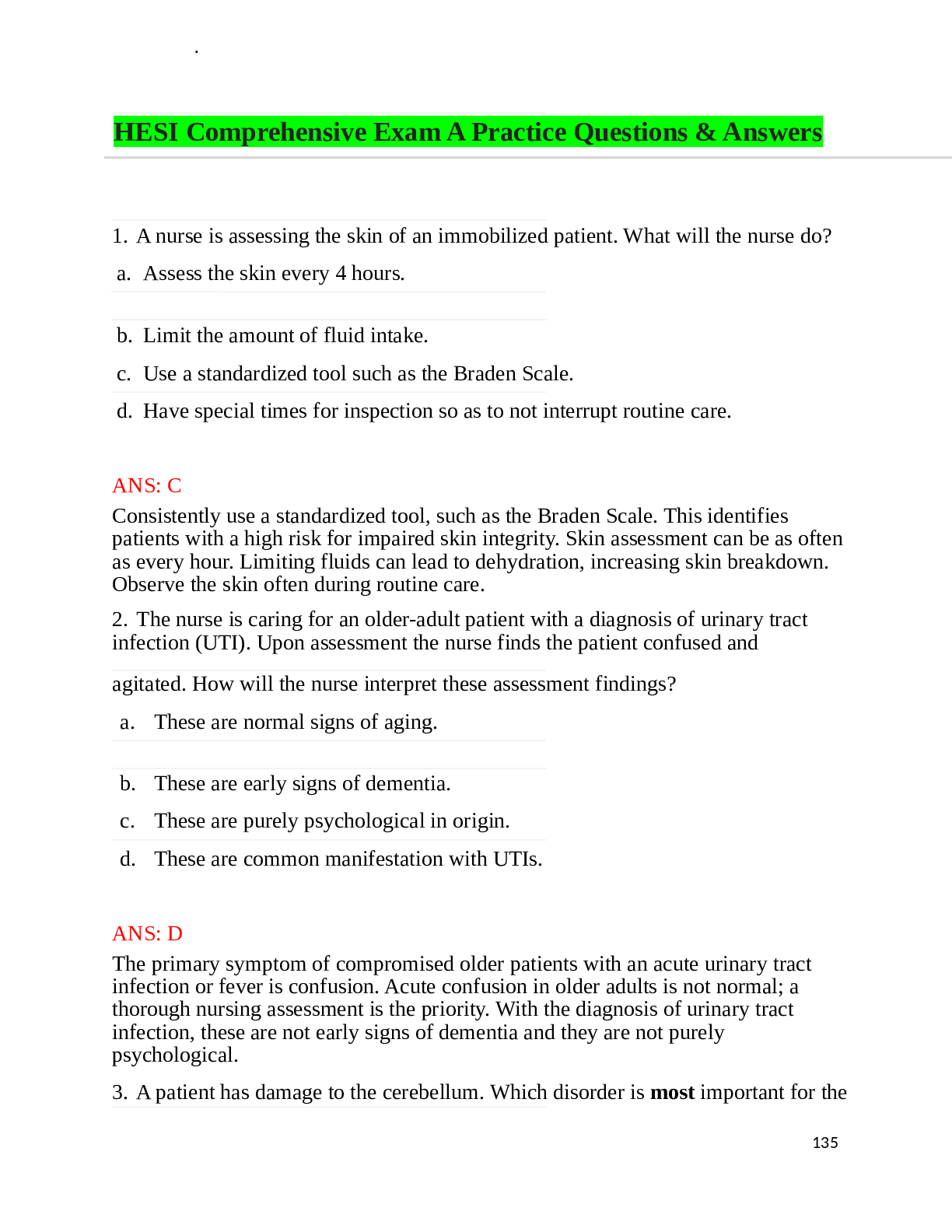
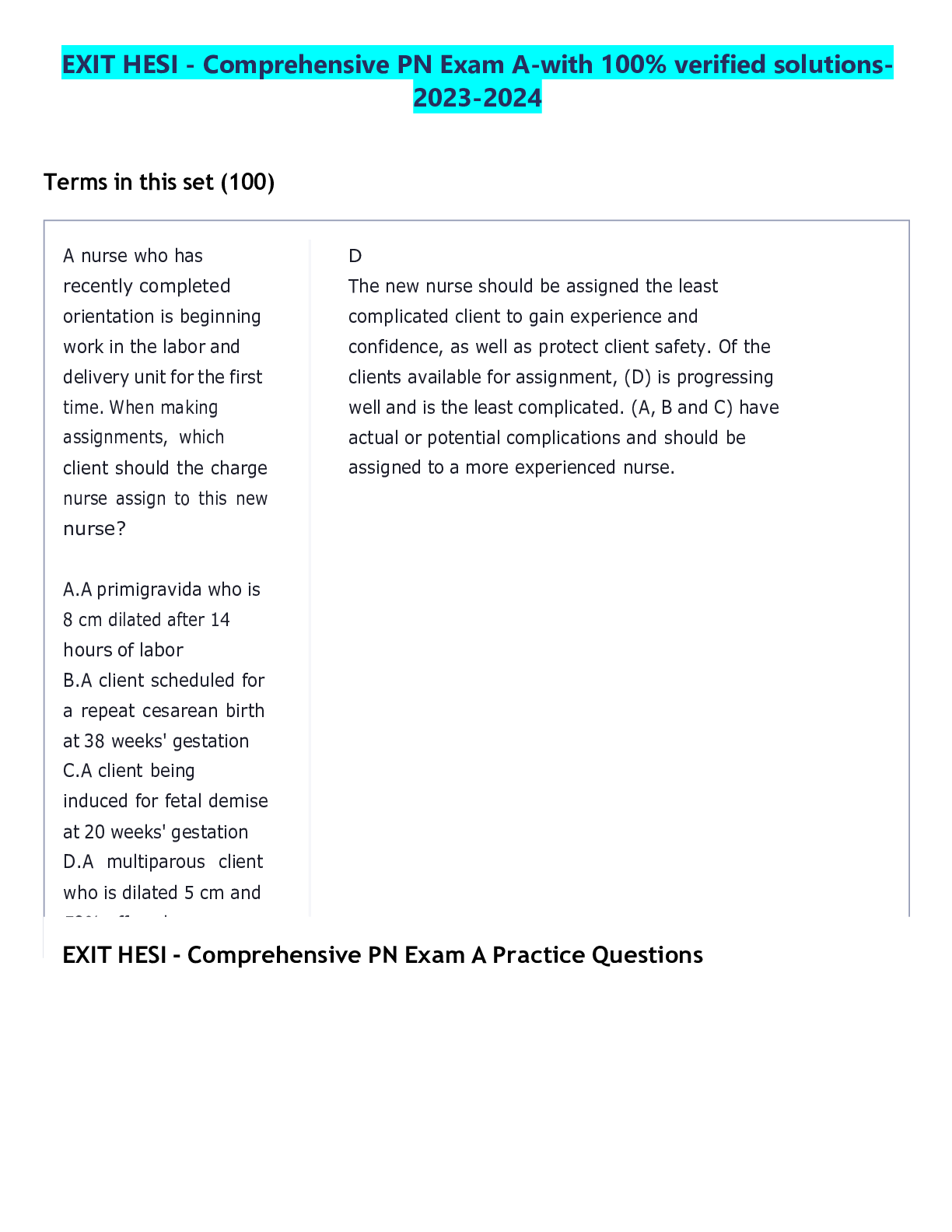




 (1).png)



